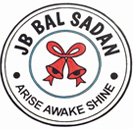Building as Learning Aid (BaLA)
Building as a Learning Aid (BaLA) is a way to holistically plan and use the school infrastructure. It assumes that the architecture of school can be a resource for teaching learning processes. We have developed the three-dimensional space to offer a unique setting to introduce a multiple sensory experience. These are visual, tactile, and olfactory and specially designed kinesthetic movement inside or outside, that provide a unique learning experience for the child. It will be a great intervention in building for children as it is easier for children to learn and teachers to communicate easily.
Goltara:-
It serves as a versatile tool for the children and teachers to engage in various literacy and numeracy activities. From webbing of letters and akshars to practicing addition and subtraction operations, it provides a dynamic environment for learning and exploration. The freedom to invent new games adds an element of creativity and adaptability to the learning process, making it more engaging and enjoyable for the participants. It is a valuable resource for fostering a hands-on approach to learning and skill development in both literacy and numeracy.
Mystery wall:-
It is a fascinating and engaging structure for the children. It provides a range of activities and experiences, from peeping and crawling to climbing and hiding. The fact that children also use it as a mode of transport adds an element of adventure and exploration to their play. Tracing the tiles and spending time, drinking water further enhances the interactive and enjoyable nature of the wall. Overall .it is a well designed and fun feature that encourages physical activity, curiosity and social interaction among children.
Educational Pillars:-
Creating pillars tailored to the age of children is an excellent approach to learning. Each pillar can serve as a foundation for different developmental stages, fostering growth and education in a structured manner. The content and methods employed with in these pillars are age appropriate, engaging and conductive to the children’s learning styles and abilities.
Ramps:-
Ramps support the development of both fine and gross motor skills. It offers a kinesthetic experience that engages children while they navigate different shapes and surfaces, promoting coordination, balance and muscle strength. The inclusive of providing access for physically challenged children ensures that all individuals can benefit from the learning environment, fostering a sense of equality and support for diverse.
Pipe phone:
The pipe phone is a wonderful tool for children to grasp the concept of sound travel in hands on way, fostering both learning and enjoyment as they communicate with each other across medium distances.
Stairways:
The stairways in the school serve as an engaging platform for the children to explore counting, addition and subtraction. It provides a familiar and enjoyable environment to learn counting.
Window grill:
Children can find so many ways to engage with the window grill. From moving beads to narrating stories, they do counting and tracing patterns. They are not only having fun but also exploring various aspects of learning and creativity. It’s a testament to their natural curiosity and ability to turn any space into a place for discovery and play.
It acts as an atelier for learning. Designed in a manner where the child could explore and empower scientific temperament, logical thinking, language, creativity, cognition, mind and soul. The patterns engraved on the terrace provides children to sharpen their vision, critical and analytical thinking. The charm and beauty of the terrace brings joy and happiness.
Shapes tiles:
It helps the children in developing maths, science, art and enhancing vocabulary at very initial stage. It also helps a child to think beyond imaginations. Children differentiate between various shapes by seeing their sides and edges. Sometimes they trace with chalk and come out with amazing results.. They try to count the sides and then build a new creative structure in their mind. They pay attention to little differences in various shapes.
Brick jalis are made to provide ventilation. Children use to write numbers and alphabets on it. Even they are making different patterns on it by using loose materials. They also use it for counting.
Work station:
It is a plane surface which is used for multipurpose like experiments, cooking displays etc. Sometimes it is used as a prop during outdoor activities.
Kitchen as a Lab:-
A kitchen within a school setting offers numerous sensory experiences.
- Sight: The vibrant colours of fruits, vegetables, and various ingredients can stimulate visual senses watching preparation of material can also be visually captivating.
- Smell: The aroma of boiled potatoes, rice, popcorn, chaat masala can engage olfactory senses, enhancing the overall experiences.
- Touch: Hands on activities such as chopping vegetables, or mixing ingredients allow children to experience different texture and temperatures promoting tactile awareness.
- Taste: Exploring different flavours through cooking and tasting various items provides a direct experience of taste sensations, allowing children to develop, their palates and preferences.
- Sound: The chopping of vegetables, whistle of the pressure cooker, create auditory stimuli adding another layer of sensory experience.









